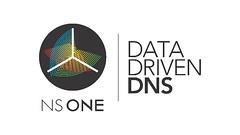Sponsored Post: Microsoft, Instrumental, Location Labs, Enova, Librato, Surge, Redis Labs, Jut.io, VoltDB, Datadog, SignalFx, InMemory.Net, VividCortex, MemSQL, Scalyr, AiScaler, AppDynamics, ManageEngine, Site24x7
 Tuesday, September 15, 2015 at 8:56AM
Tuesday, September 15, 2015 at 8:56AM 
Who's Hiring?
- Microsoft’s Visual Studio Online team is building the next generation of software development tools in the cloud out in Durham, North Carolina. Come help us build innovative workflows around Git and continuous deployment, help solve the Git scale problem or help us build a best-in-class web experience. Learn more and apply.
- Location Labs is the global pioneer in mobile security for humans. Our services are used by millions of monthly paying subscribers worldwide. We were named one of Entrepreneur magazine’s “most brilliant” companies and TechCrunch said we’ve “cracked the code” for mobile monetization. If you are someone who enjoys the scrappy, get your hands dirty atmosphere of a startup, but has the measured patience and practices to keep things robust, well documented, and repeatable, Location Labs is the place for you. Please apply here.
- As a Lead Software Engineer at Enova you’ll be one of Enova’s heavy hitters, overseeing technical components of major projects. We’re going to ask you to build a bridge, and you’ll get it built, no matter what. You’ll balance technical requirements with business needs, while advocating for a high quality codebase when working with full business teams. You’re fluent in ‘technical’ language and ‘business’ language, because you’re the engineer everyone counts on to understand how it works now, how it should work, and how it will work. Please apply here.
- As a UI Architect at Enova, you will be the elite representative of our UI culture. You will be responsible for setting a vision, guiding direction and upholding high standards within our culture. You will collaborate closely with a group of talented UI Engineers, UX Designers, Visual Designers, Marketing Associates and other key business stakeholders to establish and maintain frontend development standards across the company. Please apply here.
- VoltDB's in-memory SQL database combines streaming analytics with transaction processing in a single, horizontal scale-out platform. Customers use VoltDB to build applications that process streaming data the instant it arrives to make immediate, per-event, context-aware decisions. If you want to join our ground-breaking engineering team and make a real impact, apply here.
- At Scalyr, we're analyzing multi-gigabyte server logs in a fraction of a second. That requires serious innovation in every part of the technology stack, from frontend to backend. Help us push the envelope on low-latency browser applications, high-speed data processing, and reliable distributed systems. Help extract meaningful data from live servers and present it to users in meaningful ways. At Scalyr, you’ll learn new things, and invent a few of your own. Learn more and apply.
- UI Engineer– AppDynamics, founded in 2008 and lead by proven innovators, is looking for a passionate UI Engineer to design, architect, and develop our their user interface using the latest web and mobile technologies. Make the impossible possible and the hard easy. Apply here.
- Software Engineer - Infrastructure & Big Data – AppDynamics, leader in next generation solutions for managing modern, distributed, and extremely complex applications residing in both the cloud and the data center, is looking for a Software Engineers (All-Levels) to design and develop scalable software written in Java and MySQL for backend component of software that manages application architectures. Apply here.
Fun and Informative Events
-
Surge 2015. Want to mingle with some of the leading practitioners in the scalability, performance, and web operations space? Looking for a conference that isn't just about pitching you highly polished success stories, but that actually puts an emphasis on learning from real world experiences, including failures? Surge is the conference for you.
- Your event could be here. How cool is that?
Cool Products and Services
- Instrumental is a hosted real-time application monitoring platform. In the words of one of our customers: "Instrumental is the first place we look when an issue occurs. Graphite was always the last place we looked."
- Librato, a SolarWinds Cloud company, is a hosted monitoring platform for real-time operations and performance analytics. Easily add metrics from any source using turnkey solutions such as the AWS Cloudwatch integration, or by leveraging any of over 100 open source collection agents and language bindings. Librato is loved equally by DevOps and data engineers. Start using Librato today. Full-featured and free for 30 days.
- Real-time correlation across your logs, metrics and events. Jut.io just released its operations data hub into beta and we are already streaming in billions of log, metric and event data points each day. Using our streaming analytics platform, you can get real-time monitoring of your application performance, deep troubleshooting, and even product analytics. We allow you to easily aggregate logs and metrics by micro-service, calculate percentiles and moving window averages, forecast anomalies, and create interactive views for your whole organization. Try it for free, at any scale.
- Datadog is a monitoring service for scaling cloud infrastructures that bridges together data from servers, databases, apps and other tools. Datadog provides Dev and Ops teams with insights from their cloud environments that keep applications running smoothly. Datadog is available for a 14 day free trial at datadoghq.com.
- Turn chaotic logs and metrics into actionable data. Scalyr replaces all your tools for monitoring and analyzing logs and system metrics. Imagine being able to pinpoint and resolve operations issues without juggling multiple tools and tabs. Get visibility into your production systems: log aggregation, server metrics, monitoring, intelligent alerting, dashboards, and more. Trusted by companies like Codecademy and InsideSales. Learn more and get started with an easy 2-minute setup. Or see how Scalyr is different if you're looking for a Splunk alternative or Sumo Logic alternative.
- SignalFx: just launched an advanced monitoring platform for modern applications that's already processing 10s of billions of data points per day. SignalFx lets you create custom analytics pipelines on metrics data collected from thousands or more sources to create meaningful aggregations--such as percentiles, moving averages and growth rates--within seconds of receiving data. Start a free 30-day trial!
- InMemory.Net provides a Dot Net native in memory database for analysing large amounts of data. It runs natively on .Net, and provides a native .Net, COM & ODBC apis for integration. It also has an easy to use language for importing data, and supports standard SQL for querying data. http://InMemory.Net
- VividCortex goes beyond monitoring and measures the system's work on your servers, providing unparalleled insight and query-level analysis. This unique approach ultimately enables your team to work more effectively, ship more often, and delight more customers.
- MemSQL provides a distributed in-memory database for high value data. It's designed to handle extreme data ingest and store the data for real-time, streaming and historical analysis using SQL. MemSQL also cost effectively supports both application and ad-hoc queries concurrently across all data. Start a free 30 day trial here: http://www.memsql.com/
- aiScaler, aiProtect, aiMobile Application Delivery Controller with integrated Dynamic Site Acceleration, Denial of Service Protection and Mobile Content Management. Also available on Amazon Web Services. Free instant trial, 2 hours of FREE deployment support, no sign-up required. http://aiscaler.com
- ManageEngine Applications Manager : Monitor physical, virtual and Cloud Applications.
- www.site24x7.com : Monitor End User Experience from a global monitoring network.
If any of these items interest you there's a full description of each sponsor below. Please click to read more...





















